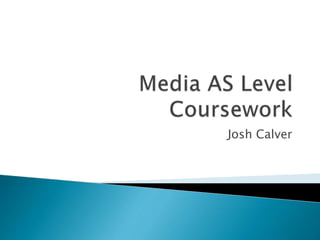Josh Calver discusses how he designed his music magazine to challenge conventions of existing music magazines. He took inspiration from magazines like MixMag but aimed to provide more background on artists. His front cover uses a black and white image with red text to stand out. The contents page advertises a free download and shows the DJ's perspective. His two-page article features an unedited photo and white text on a black background. After feedback, he improved the layout and included another artist's story. Throughout the process, he learned skills using Photoshop, Publisher and online tutorials to edit images and design pages professionally.













